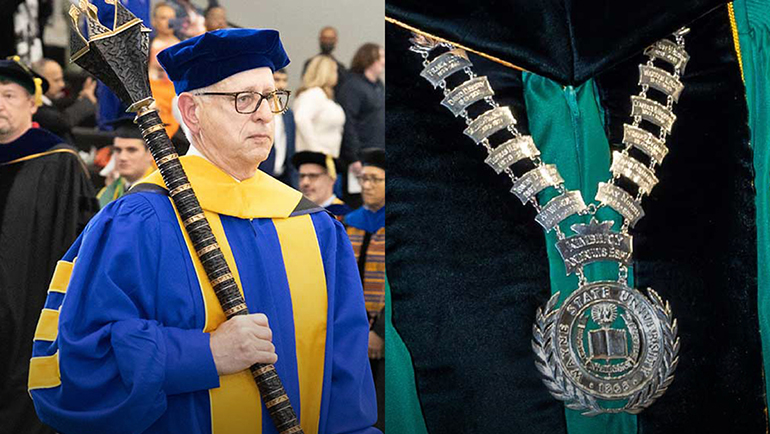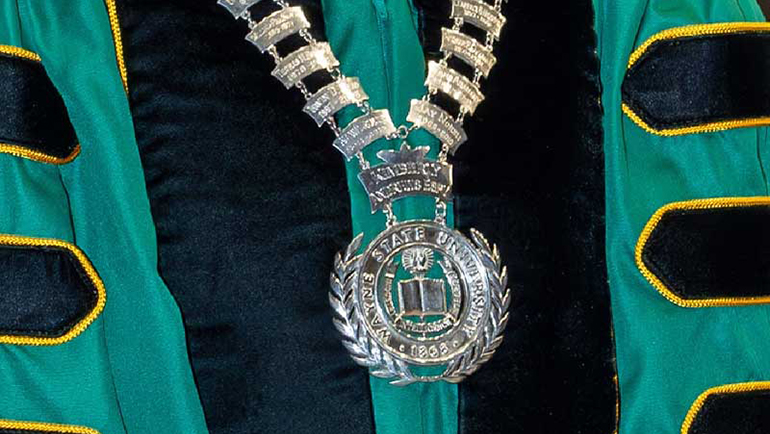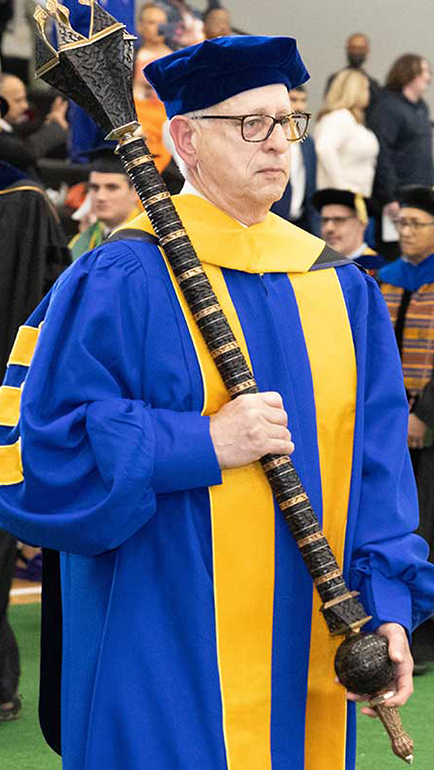
“Investiture” may be an unfamiliar word to those who don’t work at a university. This event – the official welcome for a new university president – is an important academic tradition dating to the Middle Ages.
During an investiture, the formal vesting of the president’s authority, there are several celebrated traditions and meaningful symbols.
Wayne State University President Kimberly Andrews Espy, Ph.D., began service in August 2023. The investiture ceremony on Monday, March 18, at 3 p.m. at the Detroit Institute of Arts marks completion of the transition in leadership of the university.
Investitures are typically held six to nine months after a president begins his or her term, giving the institution’s new leader time to meet with the full range constituents and develop a vision. During the investiture ceremony, guests will honor President Espy’s higher education leadership and celebrate the future of Wayne State.
Expect to hear from President Espy about her vision for Wayne State, our opportunities ahead, and the university’s importance to Detroit and our state, says Mark Gaffney, a WSU Board of Governors member and chair of the investiture planning committee. The new College to Career initiative is a great example her ideas for how we can deepen our service to our community.

“It’s also a way to say to the whole community, ‘This is a serious position, this is a serious leader,’” Gaffney said. “This ceremony formally welcomes and recognizes her.”
An investiture’s nearest academic “relative” is commencement, where similar traditions and symbols are present. The most obvious tradition in both is that university officials and academics wear their academic regalia of caps, gowns and hoods, and include the symbolic flags representing Wayne State’s academic schools and colleges.
The investiture will include welcome speeches from faculty, governmental leaders, community members and two important people in President Espy’s career, her mentor, Dr. David J. Francis, the Hugh Roy and Lillie Cranz Cullen Distinguished Chair of Quantitative Methods in the Department of Psychology at the University of Houston, and her faculty colleague, Dr. Geraldine Richmond, Under Secretary for Science and Innovation at the Department of Energy (DOE) and University of Oregon’s Presidential Chair in Science.
Two other symbols to spot at the ceremony are the Wayne State’s mace and the presidential medallion.

The WSU mace is a scepter brought to the stage by a senior faculty member. It symbolizes the highest ideals of mankind: harmony, truth, justice and learning. It is featured prominently at other academic events, including commencement.
At 51 inches tall, the mace consists of layers of carved ebony held in place by a tubular shaft. Its features relate to the ancient maces used by universities worldwide.
The medallion is connected to a sterling silver chain that has the names of Wayne State’s 12 previous presidents, and now President Espy. Her name is on the medallion with the wreathed insignia of the university and her beginning year of service. The medallion was first presented in 1965 at the inauguration of Wayne State President William Keast.
The presentation of the medallion and chain symbolizes President Espy’s completion of the leadership transition.
“Both the mace and the chain live – they reside – in the president’s office in the Faculty Administration Building,” Gaffney said. “They’ll go to the ceremony and they'll come back from the ceremony and live there in her office as a constant reminder of her responsibilities to this great university.”
Although including a lot of pomp and circumstance, investiture traditions aren’t meant to be elitist, Gaffney added. Rather, they represent Wayne State’s commitment to being an inclusive place for learning and discovery.
“We honor these traditions and symbols because they come from our past and connect to our future,” Gaffney said.
